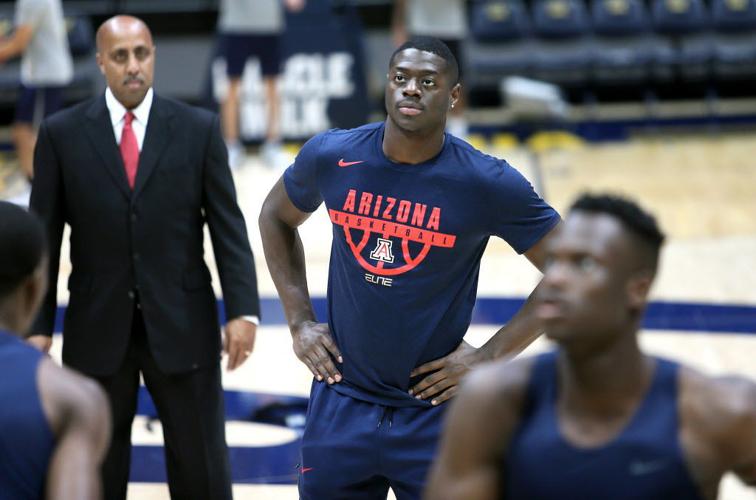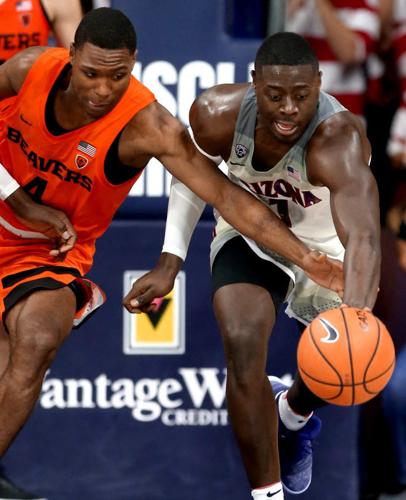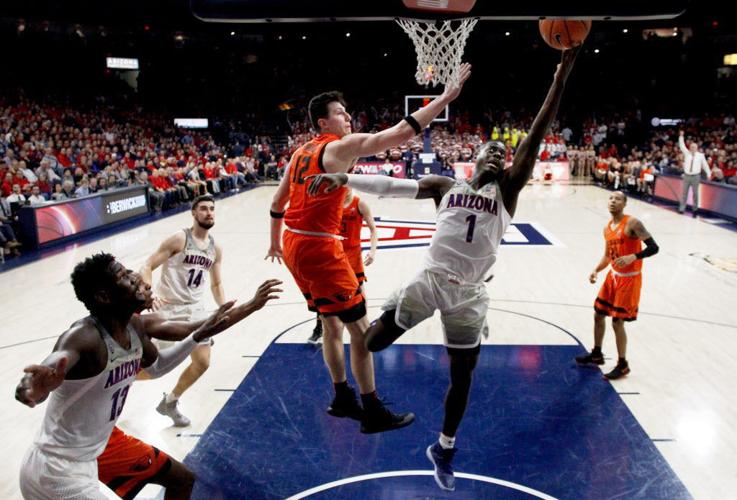At first, Rawle Alkins missed nine games and played the next nine. Then he sat out one, played one, and sat out another.
Is this something the Arizona Wildcats will have to deal with the rest of the season?
“I don’t know,” UA coach Sean Miller said Thursday, after Arizona beat Colorado 80-71 without their aggressive, powerful sophomore wing.
While the specific area and nature of Alkins’ initial injury are not known — Arizona will only say he had surgery to repair a broken bone in his right foot in September — his recurring pain has sprouted a red flag just as the Wildcats enter the final 10 games of the regular season.
Miller says Alkins didn’t suffer a re-fracture or a stress reaction in his right foot. But, for the second week in a row, something has gone wrong. Alkins sat out on Jan. 17 at Cal, appeared fine in 34 productive minutes at Stanford on Jan. 20, then was shut down this week after experiencing more pain.
Miller said Alkins might play Saturday against Utah, but only if he registers a zero on the 1-to-10 pain scale.
“It’s foot soreness,” Miller said. “He doesn’t have a stress reaction. He doesn’t have a further break. He doesn’t have anything else going on. All that’s been ruled out, and with rest — a complete shutdown — he experiences a lot more comfort.”
Why, exactly, that’s the case is subject to speculation.
“He’s reporting soreness, which is a symptom. What’s causing the symptom?” says Jeff Stotts, an Arkansas-based certified athletic trainer and consultant who analyzes college and pro sports injuries for his “In Street Clothes” website.
“Is it some fatigue on his foot because his foot was immobilized for a while and some of the muscles that are stabilizing the area are irritating him?” Stotts says. “Or is it something along the lines of the fracture site is a little bit tender and it’s still recuperating? For me, that’s the main thing.”
While Stotts says you can read “the tea leaves a little bit” about a situation such as Alkins’, he said it’s hard to really say what’s really going on without knowing what bone was hurt.
“But if he had surgery on it, that means they likely went in and added some kind of surgical hardware in the area. So soreness isn’t completely uncommon,” Stotts said. “Regardless of the location, when there has been surgery, sometimes it can be just adjusting to the hardware, and sometimes the hardware can shift. There’s plenty of things that can cause soreness.”
The New York-based Center of Podiatric Care and Sports Medicine addresses lingering pain after a foot surgery on a blog post, saying “adults continue the remodeling process indefinitely, even though adequate strength is typically achieved in three to six months. Sometimes inflammation, swelling, and pain follow.”
Arizona’s recent statements on Alkins have downplayed anything significant in his foot. The school stated that Alkins was held out against Cal for precautionary reasons and did not play Thursday against Colorado because of “minor” foot pain.
Stotts said that could be an indication Arizona is simply trying to guard against a worse situation from developing.
“If they’re saying it’s not a new fracture, or there hasn’t been anything there that they’re overly concerned about, basically it’s kind of a preventative measure,” Stotts said.
Maybe it is just some extra caution. While Alkins was not available for comment Thursday — injured UA players are rarely presented for interviews with the media — he said after the UA-Stanford game that he didn’t worry while playing 34 minutes.
“I was kind of sore after practice before we went to the Bay (Area), so Coach (Miller) told me to rest it up,” Alkins said after the Stanford game. “Then after the Cal game he asked me how it’s feeling. I told him it was good.”
But it wasn’t good Thursday.
And who knows if it will be good Saturday, or before a more important game sometime in March?






